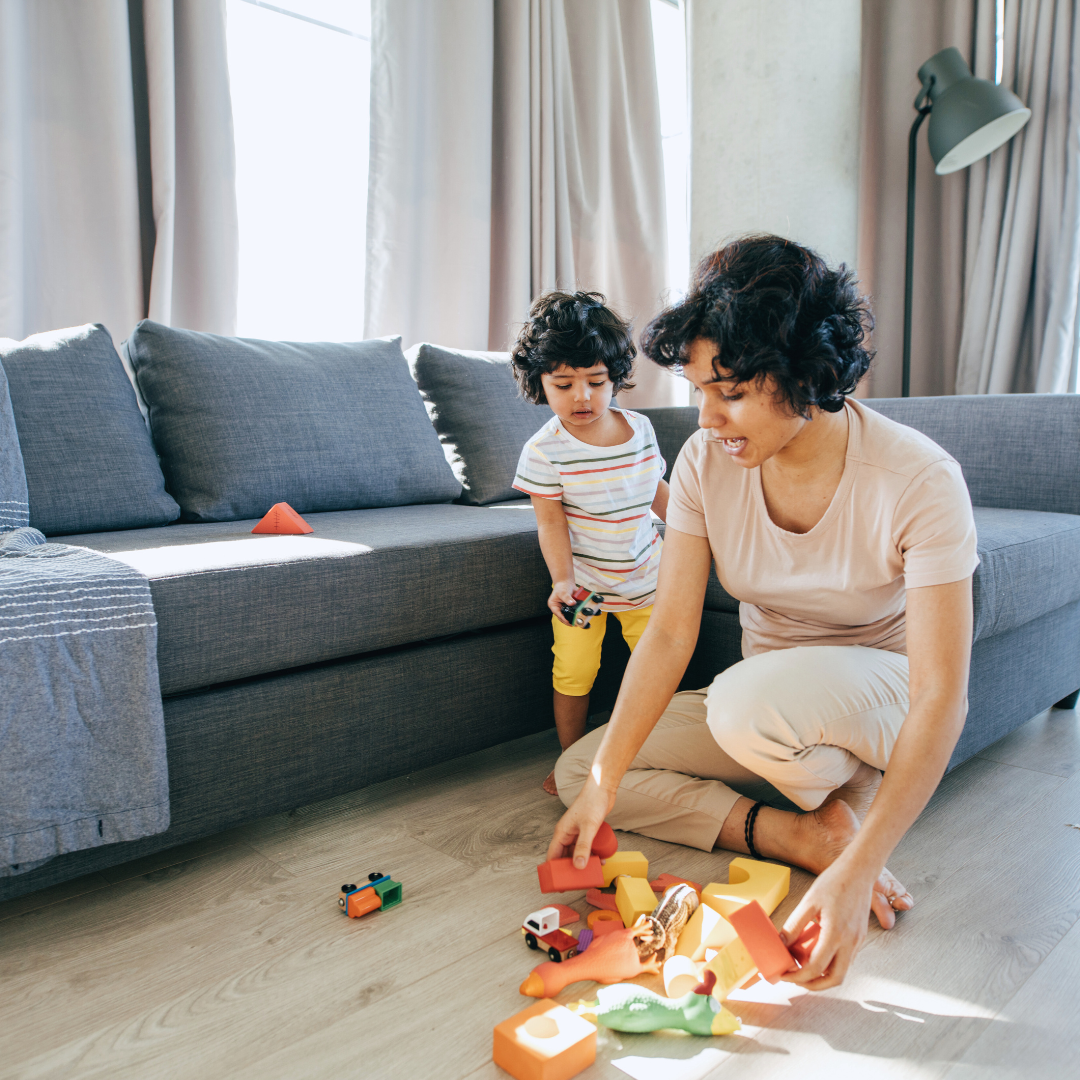Simple Home Organisation Tips for Busy Parents: Streamline Your Space and Simplify Daily Life
Busy parents often find themselves overwhelmed by the chaos of everyday life. Between work commitments, school runs, and extracurricular activities, maintaining a tidy and organised home can feel like an impossible task. Simple organisation tips can transform their living space, making it more manageable and enjoyable for the whole family.
Prioritising organisation not only saves time but also reduces stress, allowing parents to focus on what truly matters. By implementing a few practical strategies, such as decluttering regularly and designating specific areas for essential items, parents can create an environment that fosters productivity and peace. These straightforward adjustments can lead to a more harmonious household, making daily routines smoother and more efficient.
In this article, parents can discover effective home organisation techniques tailored to their busy lifestyles. With a focus on simplicity and practicality, these tips aim to empower parents to reclaim control over their living spaces without feeling overwhelmed. Embracing these strategies can lead to a more organised and inviting home for everyone.
Quick Decluttering Strategies for Busy Parents
Busy parents can find decluttering a daunting task, yet implementing quick and effective strategies can simplify the process. By establishing routines and involving children, they can create a more orderly home environment without significant time investment.
Daily Declutter Routines
Incorporating a daily decluttering routine can keep chaos at bay. Parents can allocate just 10-15 minutes each day to tidy specific areas. Focus on high-traffic zones, such as the living room or kitchen, where clutter tends to accumulate.
A simple approach is to use a timer. Setting it for 10 minutes encourages focused work. During this time, parents should aim to clear surfaces, organise items, and put things back in designated storage.
Creating a checklist can also enhance efficiency. For example:
- Clear countertops
- Tidy toys in the living room
- Organise shoes at the entrance
These small tasks, when completed daily, lead to noticeable improvements over time.
Involving Children in Decluttering
Children can be valuable partners in decluttering. Teaching them the importance of organisation early on instils good habits.
Parents may set a specific time, such as before dinner or bedtime, for a quick tidy-up. Making it a game can increase engagement. For instance, challenge them to see who can pick up the most toys in five minutes.
Offer clear choices too. Present two or three items and ask which they wish to keep. This empowers children and reduces resistance.
Moreover, recognising their efforts with praise reinforces positive behaviour. Creating a sense of teamwork makes decluttering less of a chore and more of a family activity.
Choosing What to Keep or Donate
A systematic approach helps in deciding what items to keep or donate. Parents can adopt the “One-Year Rule”: if an item hasn’t been used in the past year, it’s time to let it go.
Using a “Keep, Donate, Toss” guide simplifies decision-making.
- Keep: Items in regular use
- Donate: Items in good condition, but no longer needed
- Toss: Broken or damaged items
Creating designated boxes for each category aids in the process. Set clear deadlines for when donations will be taken to charity. This creates urgency, motivating parents to follow through.
Regularly reviewing toys, clothes, and kitchen items helps maintain an organised home. Frequent evaluations ensure clutter doesn’t build up again.
If you find a steady stream of belongings that won’t fit back into the home — seasonal gear, bulky sports equipment, or items you want to keep but not display — storing them offsite can be a sensible middle ground. Many parents prefer short-term units with drive-up access for easy loading and climate-controlled spaces for delicate items. For families in the Mooresville area, checking options from local storage service providers nearby can reveal affordable, flexible solutions for overflow, bulky gear, or even RV and boat storage. This keeps everyday spaces tidy while ensuring things remain accessible when needed.
Efficient Cleaning Hacks and Time-Saving Solutions
Busy parents often struggle to maintain a clean home amid their hectic schedules. Implementing efficient cleaning hacks and time-saving solutions can make a significant difference in managing household tasks.
Speedy Cleaning Tasks for Every Room
Creating a list of speedy tasks for each room can streamline the cleaning process. For instance, in the living room, parents can quickly pick up clutter, dust surfaces, and vacuum in under 20 minutes.
In the kitchen, focus on wiping down counters, loading the dishwasher, and sweeping the floor.
In bathrooms, a quick tidy-up includes cleaning the mirror, wiping the sink, and replacing toiletries.
Consider using a timer set for 15 minutes in each room to encourage efficiency and maintain focus.
Using Multi-Purpose Cleaning Products
Choosing multi-purpose cleaning products saves time and space. Look for solutions that can effectively tackle various surfaces like glass, countertops, and bathroom tiles.
For example, a single cleaner that works on both kitchen and bathroom surfaces reduces the need for multiple bottles.
Additionally, using portable wipes for quick clean-ups can be particularly helpful for busy parents managing time constraints.
Always read labels to ensure products are safe for the intended surfaces and family members.
Setting Up a Cleaning Schedule
Implementing a cleaning schedule can provide structure and make tasks manageable. Parents should consider dividing tasks over the week.
For instance, designating specific days for vacuuming, dusting, and laundry can prevent chores from piling up.
Involving children in age-appropriate tasks fosters a sense of responsibility and lessens the burden on parents.
Utilise visual aids, like a calendar or chart, to keep track of chores. This will reinforce routine and encourage consistency.
Organising Solutions for Family Spaces
For busy parents, creating a functional and tidy home can be challenging. Implementing smart storage solutions and establishing defined zones can significantly enhance functionality and ease daily routines.
Smart Storage Ideas
Effective storage is vital in family spaces. Incorporating multifunctional furniture, such as ottomans or coffee tables with hidden compartments, maximises space. This type of furniture serves as seating and storage, helping to tidy up quickly.
- Use vertical space: Wall-mounted shelves can store books, toys, and decorative items. Baskets on these shelves keep everything contained and organised.
- Label containers: Clear storage bins labelled with their contents make it easy for kids to return items to their proper places. This not only reduces clutter but also encourages children to participate in tidying up.
Zone-Based Organisation
Creating dedicated zones within family spaces helps streamline activities. For example, designating a reading nook with comfortable seating and a small bookshelf encourages a love of reading while keeping books in one area.
- Play zones: Establish specific areas for play, homework, and relaxation. Use rugs or decorative items to define these spaces visually.
- Daily routines: Incorporate a “drop zone” for shoes, bags, and coats near the entrance. This makes it easier for busy parents and children to maintain order as they come and go.
By thoughtfully arranging spaces and utilising suitable storage solutions, busy parents can create an organised, functional home that meets the family’s needs.
Home Organisation Tips for Parents Working from Home
Creating a functional and organised environment is essential for parents working from home. This involves establishing a dedicated workspace and effectively managing family and work schedules to maintain productivity.
Creating a Productive Workspace
A designated workspace is crucial for minimising distractions. Parents should choose a quiet area of the home, ideally away from high-traffic zones. This space should be equipped with the necessary tools, such as a comfortable chair, a desk, and the technology required for daily tasks.
Keeping the workspace organised can enhance focus. Using storage solutions like baskets, shelves, and filing cabinets can help keep documents and materials neatly arranged. Regularly decluttering the area ensures it remains inviting and functional. Personal touches, like plants or artwork, can also make the environment more pleasant without becoming overly distracting.
If your home office still lacks space for seasonal gear or bulky school supplies, off-site storage can be a practical extension of an organised system. Many parents find short-term, climate-controlled units useful for preserving textiles and away-from-home archives, while drive-up access makes dropping off items quick between runs. For those in Greenbrier or nearby towns, consulting local storage top picks nearby helps identify facilities with vehicle parking and flexible unit sizes to suit family needs. Integrating an external unit into your rotation can keep the home workspace clear without sacrificing access to stored items.
Managing Family and Work Schedules
Balancing family responsibilities with work demands requires thoughtful scheduling. Parents can use shared calendars, such as Google Calendar, to coordinate important events and meetings. This ensures the whole family is on the same page.
Setting boundaries is vital. Parents should communicate their work hours clearly to family members, emphasising when they are unavailable. Implementing a routine can help structure the day; designated times for work, family activities, and breaks can improve overall efficiency. Involving children in household chores during work hours aids in fostering a cooperative environment, benefiting both work and family time.


